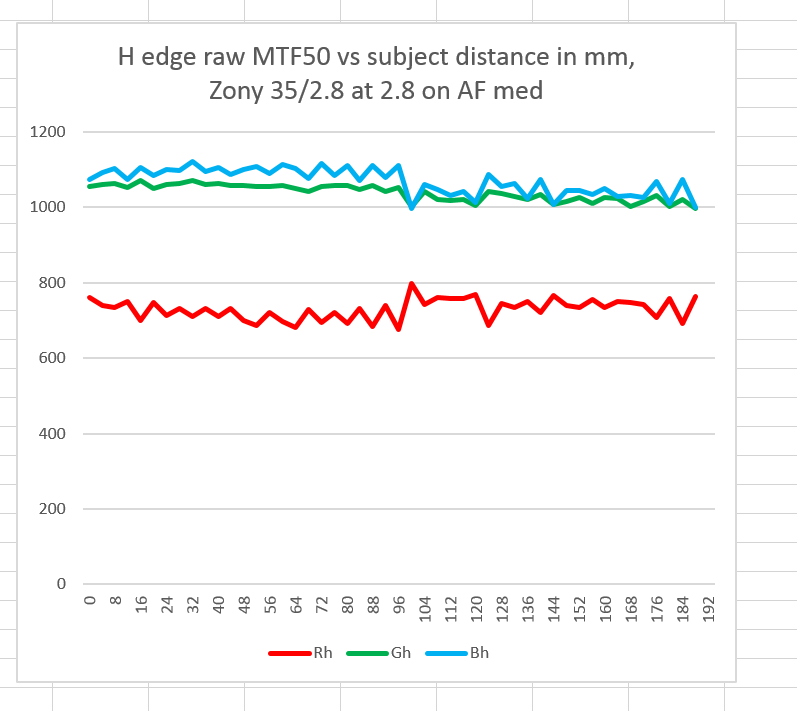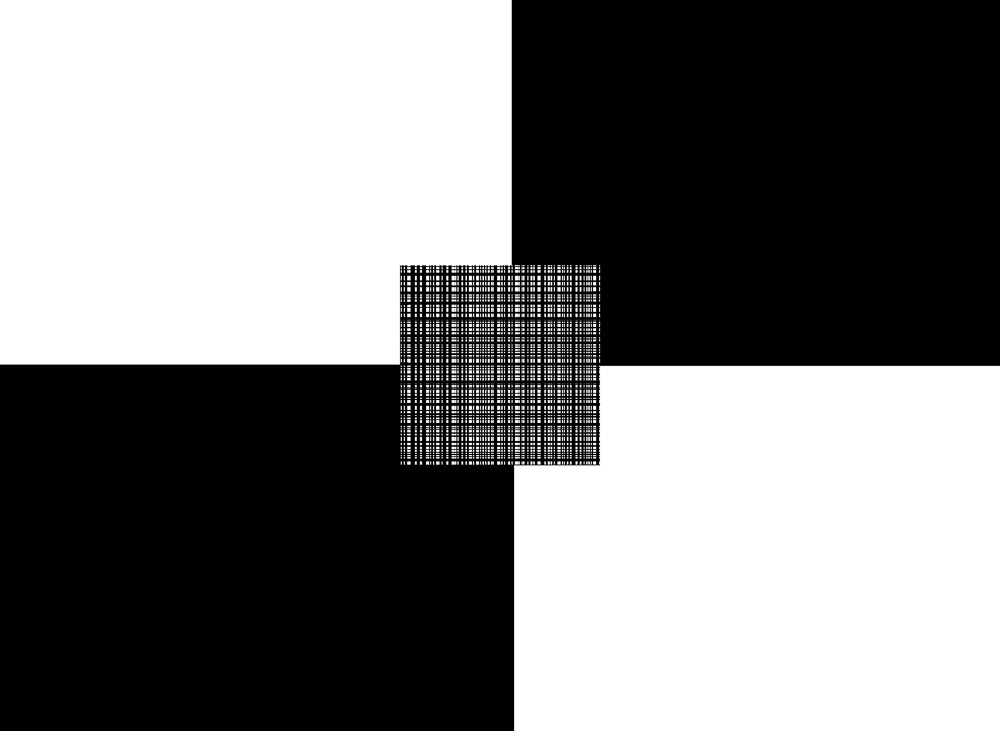I’m taking a break from the medium tele testing to run down an AF anomaly I stumbled onto with the Batis 85/1.8 on the Sony a7RII. That lens has considerable longitudinal chromatic aberration (LoCA), and, when the camera is in autofocus (AF) mode, it focuses systematically in the wrong place, on the side of the red channel MTF50 peak that is farther from the green and blue channel MTF50 peaks, not slightly to the red channel peal side of the green channel peak.
Testing with the Sony 90/2.8 FE Macro lens, which doesn’t have as much LoCA, revealed no such abnormality. Is the problem the LoCA of the 85/1.8, or is it something else? Enter the Zony 35/2.8, a honey, no, a jewel of a lens, that, while it is small and reasonably sharp, has considerable LoCA.
I lit a slanted-edge target with two Westcott LED panels, and set the color temperature to 5000K. This is the target, with the Horshack grid in the center.
I mounted a Sony a7RII with the Sony/Zeiss 35mm f/2.8 FE attached to the Cognisys computer-driven focusing rail. I set the controller up to use 192mm of travel and make 49 exposures 4mm apart. I set the assembly 3.5 feet from the on-axis target, mounted the lens, focused a little short of mid-rail using manual focusing, and focused on the grid using AF-S with flexible spot, AF priority, and all three spot sizes in turn. I exposed 49-shot series with the lens wide open. I used Jack Hogan’s Matlab program, MTF Mapper, and DCRAW to pick the horizontal edges and calculate the MTF50s for the raw color planes, imported the data into Excel, and plotted the results in cycles per picture height vs subject distance change.
The manual focused results for a horizontal edge:
And the vertical edge results:
We can see that the blue channel peak is higher for the vertical edge. We can also see that there is so much LoCA that, when I focused, Iset the camera in a position so that I missed the red channel peak at the close end of the rail travel.
AF with a small spot, horizontal edge:
The vertical edge:
The AF didn’t get all three color panes in focus. How could it with that much LoCA? However, with the exception of one random point, it got the important plane, the green plane, in focus. As a bonus, we got sharp results for the blue plane, and credible results for the red one. I call that AF doing a good job in the face of a lot of LoCA.
Just for drill, here are the graphs for the medium and large spot sizes:




The larger spot sizes are more consistent — in the case of the large spot, that’s a surprise to me, since the medium spot is already larger than the Horshack focusing grid — but the trend is the same.





Leave a Reply